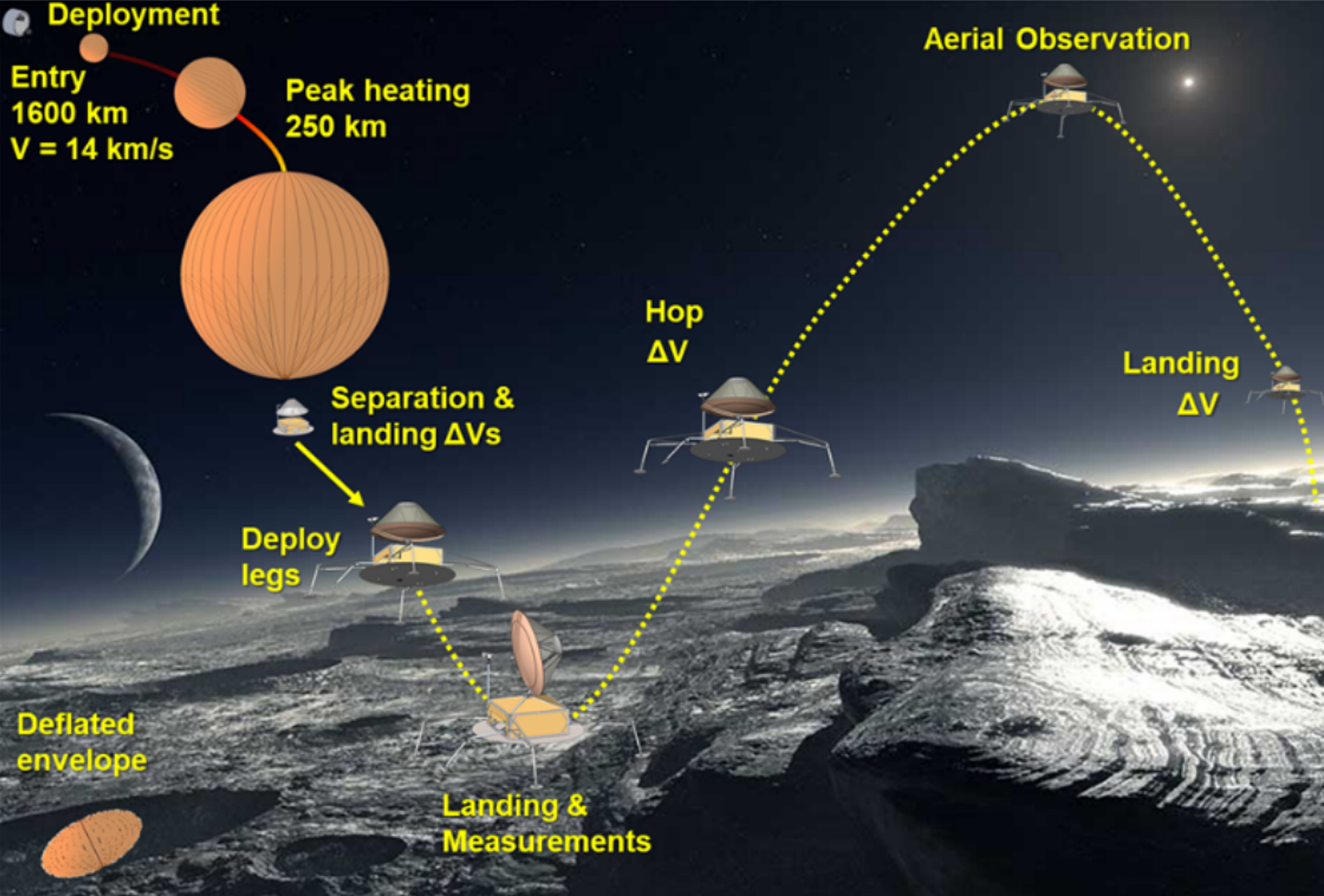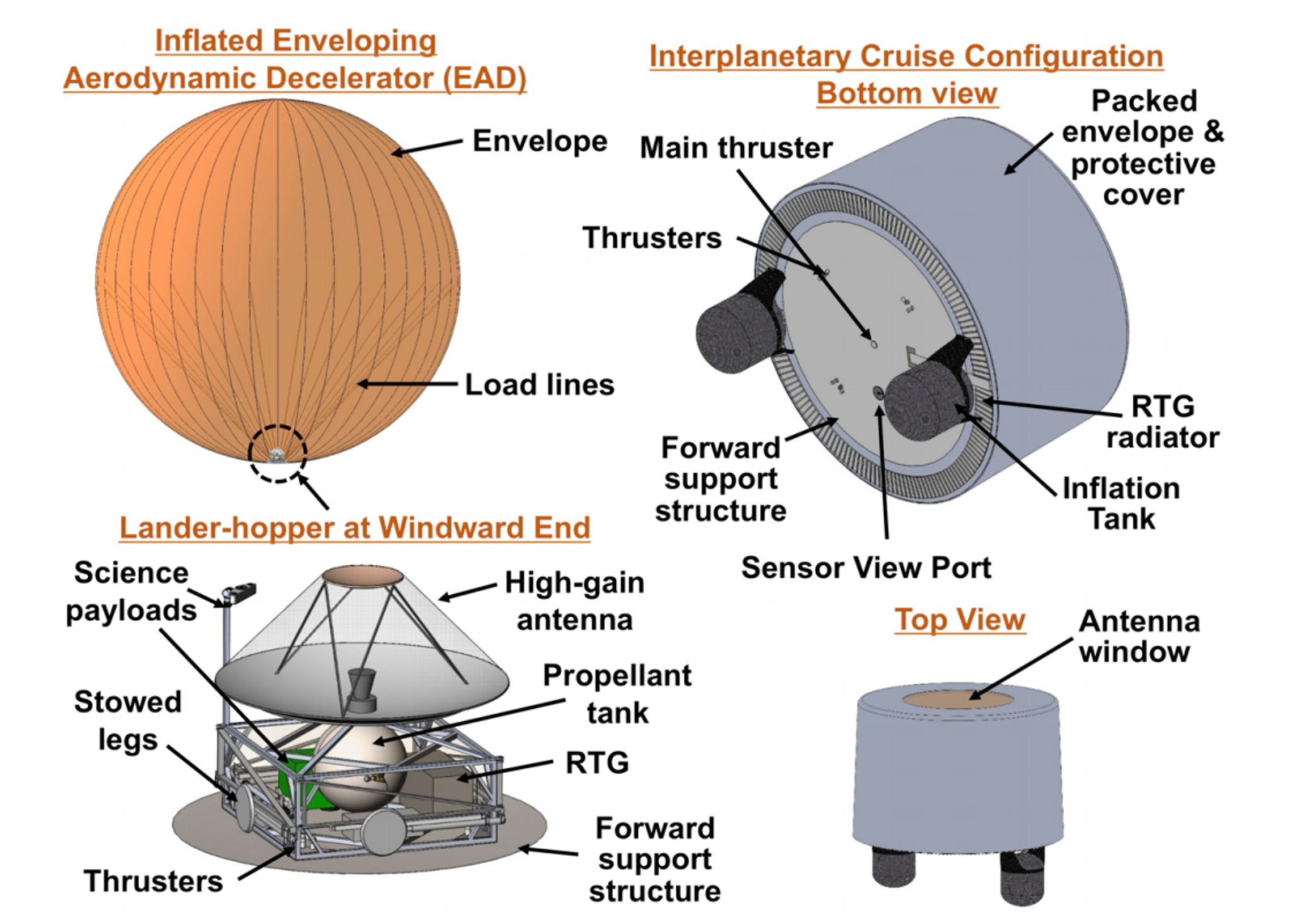Kerry Nock
Global Aerospace Corporation
If low approach velocities are desired for orbiters or landers, ballistic flight times to Pluto and other similar distant Kuiper Belt Object-like targets like Triton can be very long – a generation. Even so, the New Horizons (NH) flyby took nearly 10 years to reach Pluto with the help of a Jupiter gravity assist and still the approach velocity was about 14 km/s. How can one land on or orbit Pluto in a reasonable mission time without many hundreds of millions of dollars in nuclear power sources for low-thrust propulsion, or an exotic propulsion system that could take decades and many millions of dollars to develop, or a nextgeneration launch vehicle and a massive chemical propulsion system? Also, can a Pluto mission be accomplished under the aegis of a NASA New Frontiers Program? An answer to these questions is to launch a small probe on a trajectory similar to NH; deploy and inflate a large, lightweight decelerator on approach to Pluto; use Pluto’s thin extended atmosphere to reduce vehicle speed at the surface to about 120 m/s; and separate the lander from its decelerator before settling propulsively on the surface. A key innovation that enables this mission concept is an Enveloping Aerodynamic Decelerator (EAD). EAD enables this Pluto mission due to its large cross-section area, low mass and unique surface aerothermodynamic features. For example, entry heating is radiated away from both sides of the envelope to keep it cool eliminating the need for heavy thermal protection systems (TPS). This enables the use of commercially available films such as polyimides. Shocks could be a major challenge for flexible and inflatable entry technology. However, EAD provides a solution by encapsulating the lander within and at the windward end of the envelope, creating a uniform and stable, spherical surface without shock impingement to keep film and lander heating rates very low. Another novel aspect of this mission is Pluto’s thin and extended atmosphere itself that reaches out to about 1,600 km above the surface. This atmosphere is ideal for dissipating large amounts of kinetic energy by means of aerodynamic drag, but the key is making the drag area large, e.g. tens of meters in diameter, while keeping system weight low. With judicious targeting and control, the EAD could even enable orbiters of Pluto and Neptune’s moon Triton that has a similar thin, extended atmosphere. A further innovation is the combining of several elements into one flight system we dub Entrycraft. The entry system, lander, and cruise stage are integrated into an Entrycraft for three reasons namely, 1) the envelope protects the lander during entry, 2) the flight system can use the same subsystems (communications, computer, attitude control, propulsion, and power) during cruise, entry and landing, surface ops, and hopping, and 3) the primary support structure of the lander can also be a rigid windward end of the EAD. With suitable planning and design, this integrated nature of the Entrycraft design will work to keep overall hardware costs low. These innovations and novel mission elements could enable a Pluto Lander mission that only requires a single nuclear power source to keep overall mission costs low. Finally, depending on the science and mission requirements, these innovations could enable a probe of similar bodies, like Triton, to descend to their surfaces or to be placed into orbit via aerocapture. This proposed study addresses the feasibility of a relatively near-term and low-cost mission to Pluto, as well as other bodies with low-pressure atmospheres (e.g., Triton), with a focus on lander missions. The primary objective of this proposed Phase II study is to demonstrate the concept viability for Pluto and other Solar System bodies, address high-risk issues like envelope packing and deployment and targeting accuracy and establish its maturity for inclusion into future Outer Planet New Frontier and Flagship mission planning.
































